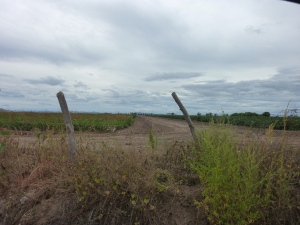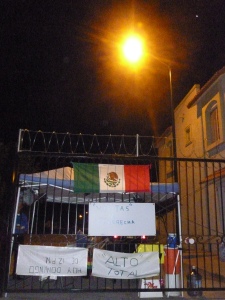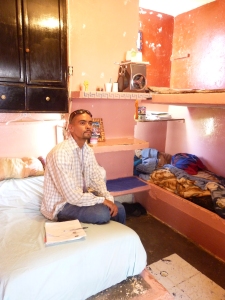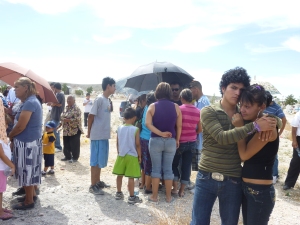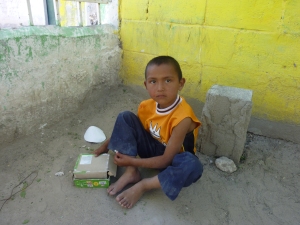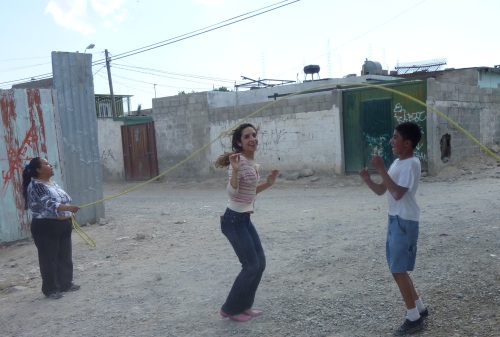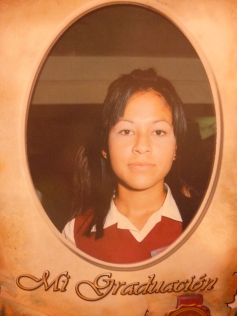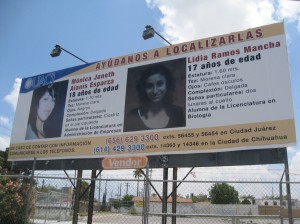It’s hard to tell some stories in less than four minutes.
In a recent piece on NPR’s All Things Considered, there was a lot of detail I left out on account of time. The story was about how residents in the northern Mexican town of Ascension literally took justice into their own hands by beating two suspected kidnappers who eventually died.
I arrived in Ascension in the company of Adriana Gomez Licon, a young, yet enterprising reporter from the El Paso Times. We figured we’d be safer making the trip together. Because car jackings are a problem in Mexico, we opted for a 2 ½ hour bus ride from Ciudad Juarez to Ascension. That put us in town at 1 in the afternoon. By then we’d missed a big city hall rally where residents demanded that the mayor fire all 14 remaining police officers. About half the force had already resigned the high risk job.
The event that set off the public’s fury was the kidnapping of a 16-year-old girl. Adriana and I visited the girl’s aunt, Mari Cruz. The following account is her version of the ordeal:
The girl worked at another aunt’s seafood restaurant in order to pay for her high school. Tuesday morning she was apparently counting money behind the counter when the kidnappers entered the restaurant and mistook her for the owner. Then they took her at gunpoint.
Supposedly, there was a total of six kidnappers traveling in two separate vehicles. One was a stolen truck allegedly snagged the day before from a Mennonite farmer in the neighboring town of Buena Vista. Word about the kidnapping spread quickly and soon an angry group of about 200 townspeople gave chase.
One of the cars got a flat and the three men inside were captured by the Mexican military and taken to Ciudad Juarez. They are charged with kidnapping and illegal weapon possession. The other car ran off the road and the three inside fled on foot into side lining cotton fields. The girl was left behind in the truck where residents were able to retrieve her.
When the three young men in the truck took off, an incredible pursuit ensued. Residents say the group of 200 combed the cotton fields determined to find them. A local farmer even flew out in his crop plane to assist in the search. Within 30 minutes the people found two of the young men.
The fate that awaited them was brutal. The people of Ascension carried with them pent-up coraje, a Spanish word that means something like resentment mixed with rage. One man, a local kitchen cabinet maker, took us out to the site of the first beating. It was a soft soil road in between two cotton fields. The cabinet maker, who will sit on city council next month, gave us his first person account.
“When the people got a hold of them they began to beat them and they began to shout at them about how much harm they’d caused and how much they suffered because of them,” he said.
In the crowd, he said he saw the faces of brothers, fathers and cousins who had all had a loved one kidnapped or had been kidnapped themselves.
People recognized the two young men, he said. They grew up in the community.
“I yelled at them too,” said the cabinet maker. He said he didn’t participate in the beating and that he didn’t agree with the people’s actions. “But it was hard for me to say ‘okay, that’s enough’ because I’m not the one who’s loved one was kidnapped.”
After about 10 minutes of beating, the federal police arrived and took custody of the two young men. At least one is under 17 a state police representative told me. The feds supposedly took the young men in someone’s pick up truck to a small nearby military base. A group of townspeople rode in the back of the pick up to supervise the feds.
But police didn’t hold onto the two young men for long. Residents say that soon a larger, angrier mob of at least 1,000 arrived at the military base. They broke down the gate and got their hands on the two suspects and beat them yet again. The story gets a little unclear at this point, but I was told the feds were able to get the two suspects into a federal police car which the townspeople then surrounded and prevented the feds from accessing again. A seven hour standoff followed. Residents say the townspeople were even able to prevent a federal police helicopter from landing near the base by obstructing it’s landing space. Meanwhile the two young men remained locked in the hot police car, badly beaten. According to the autopsy report, they eventually died of their injuries.
Part of the public’s anger has to do with the fact that they’re drowning in crime and never see justice. One resident told us that over the past year this town of about 15,000 experiences on average three kidnappings a week. Even if the kidnappers are caught she said they are typically released within two weeks, especially if they are minors.
She said one of the young men who was beaten was a minor. Once at the military base, she said he yelled at the crowd, “See you in fifteen days!”
It’s hard to say what is fueling the kidnappings in Ascension. The mayor blamed it on people formerly employed by the drug trade. He said that with all the border security on the American side it was getting harder for them to cross their merchandise. So now they’ve turned to other criminal activity. I’m sure the bad economy could also be a reason.
Residents told us that most of the time the kidnappers release their victims once the ransom is paid. They say most survivors aren’t seriously harmed by their kidnappers. But a lot of people don’t have the money to pay ransom. Some go door to door asking their neighbors if they can spare a little cash to help them collect enough money.
“Don’t give them too much money” the neighbors say, “Otherwise they’ll go out and buy bigger guns.”
Now the residents of Ascension are forming a sort of neighborhood watch committee. They’re joining up with the nearby LeBaron community, also known as a town that made self-protection it’s own responsibility. It will be interesting to follow what becomes of this little town in the coming weeks.

